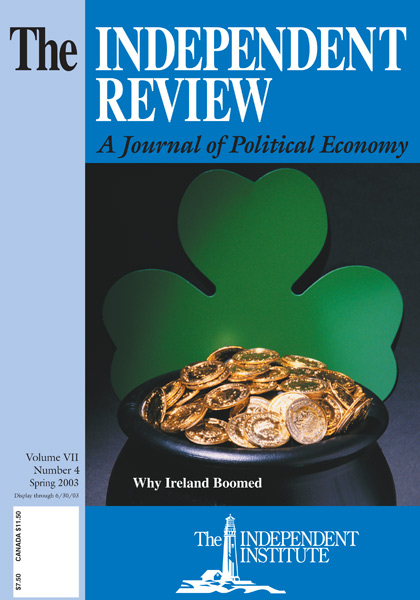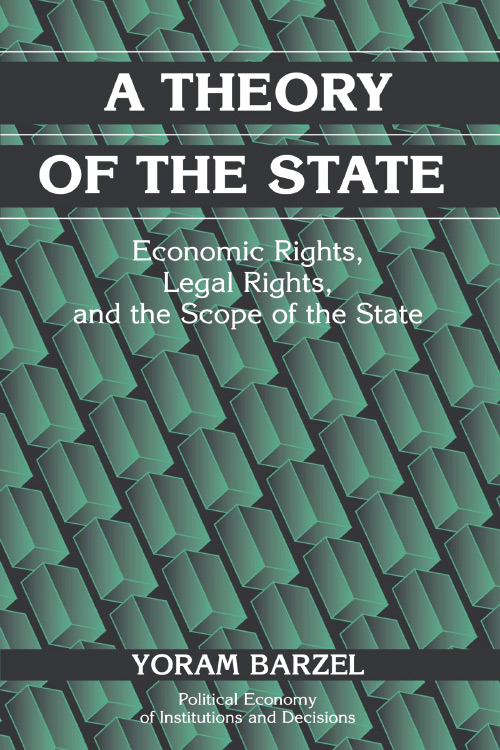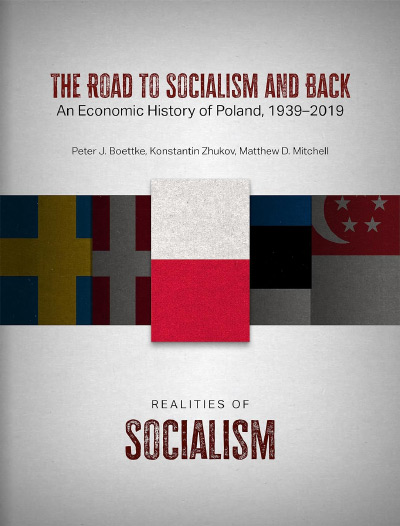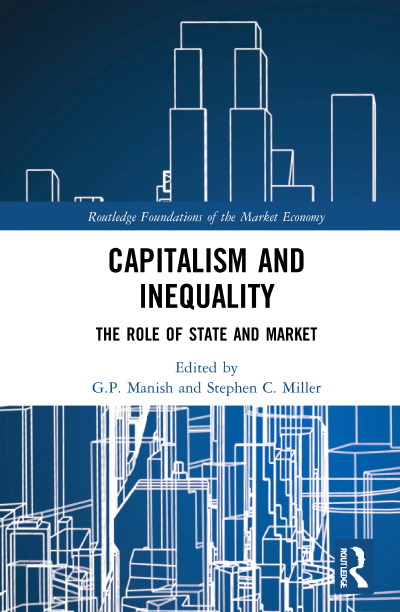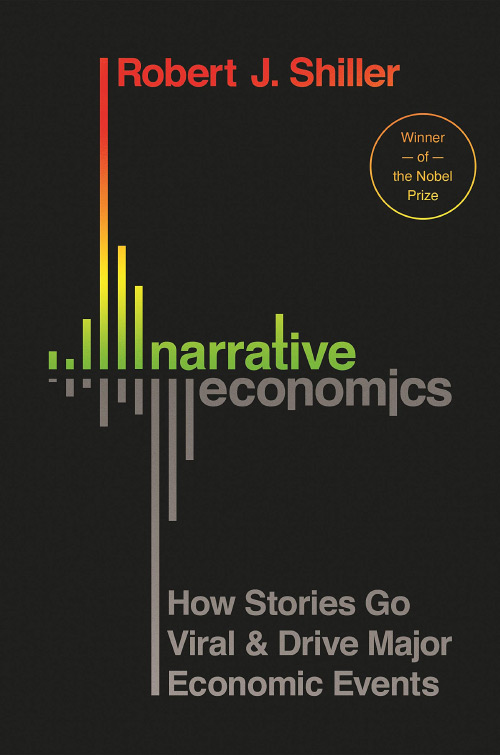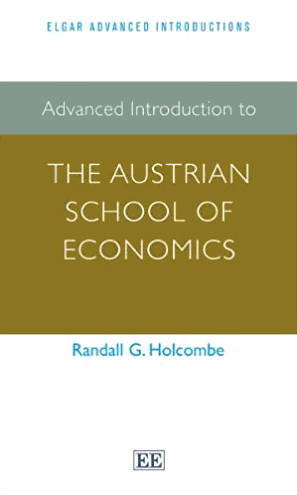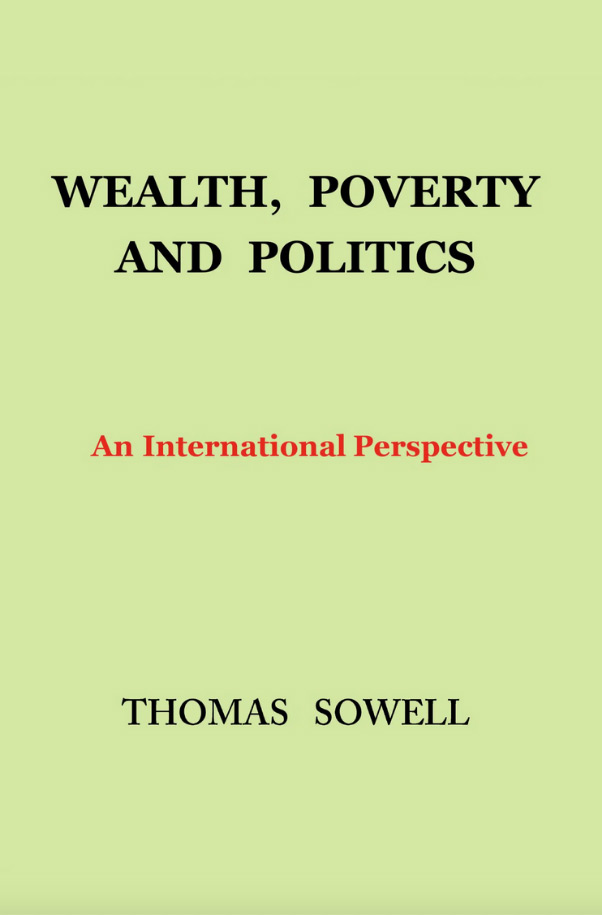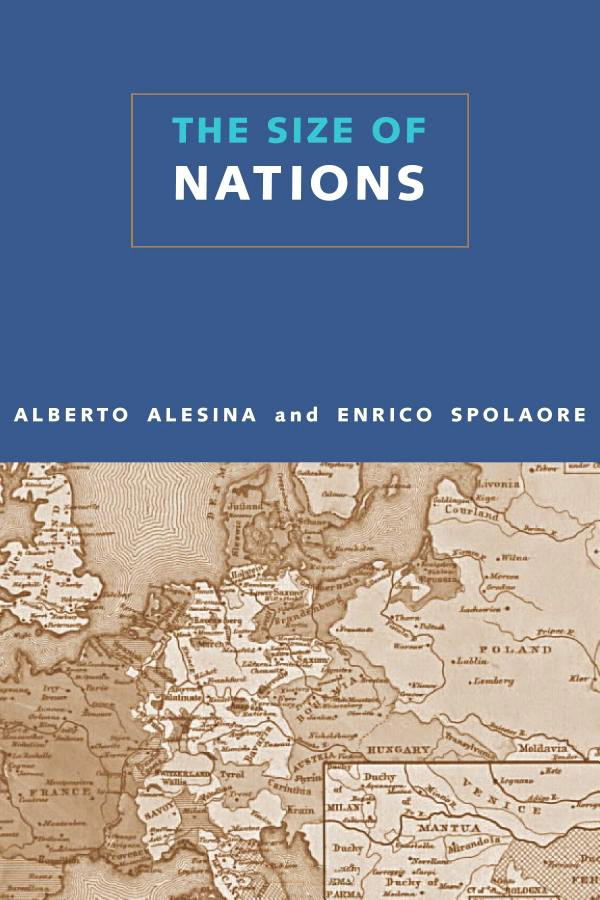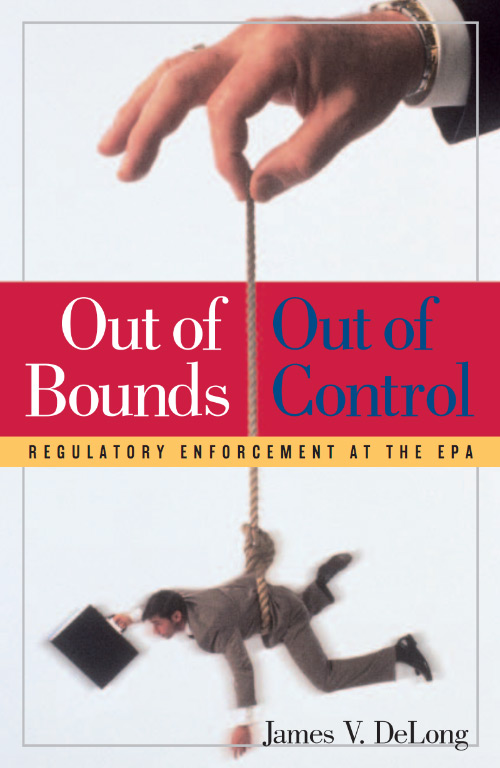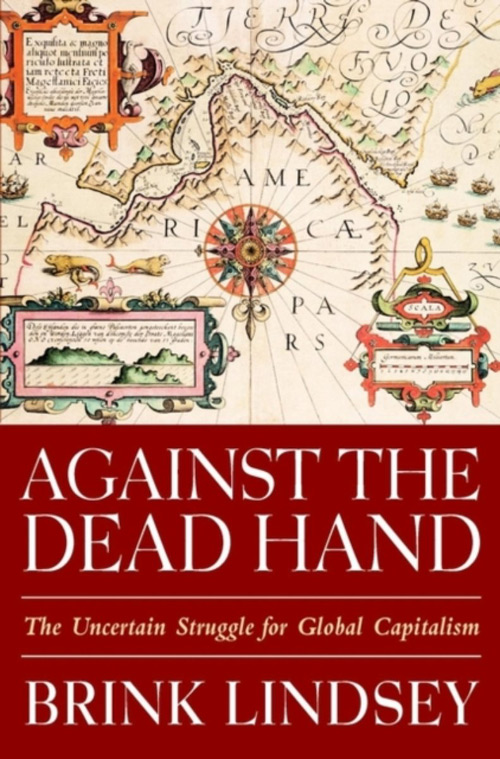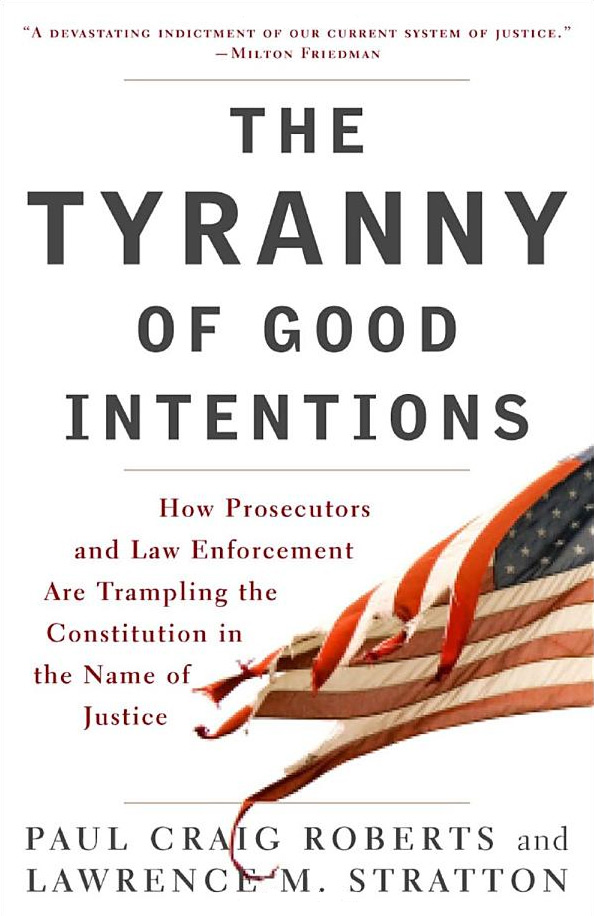In his new book A Theory of the State, Yoram Barzel aims to “explain how ‘the state’ first emerged and to describe the forces that have shaped it over time” (p. 1). The book defends three central theses. The first contends that “the state” is created consciously as a violent third-party enforcement mechanism designed to facilitate agreements that are difficult to enforce using other mechanisms. Second, individuals will allow the emergence of such an enforcement mechanism only when additional safeguards have been put in place that mitigate the risk that this violent enforcer will abuse its powers. Finally, the precise definition of legal rights that the state will enforce depends critically on the transaction costs involved in delineating rights and adjudicating disputes. Barzel’s argument is engaging and provocative. Nevertheless, I do not believe that he succeeds in providing the persuasive theory of the emergence of the state that he promises. After presenting an overview of Barzel’s argument, I return to some of the shortcomings of his analysis.
The starting point for Barzel’s theory is the Hobbesian jungle, in which individuals act independently and in the absence of organized power. In this state, humans’ natural abilities will bring forth a distribution of goods over which individuals can exercise control. This distribution defines the “economic rights” (in contrast to the“legal rights”) that individuals enjoy. Most interactions in such a state initially consist of aggression and resistance as individuals clash over possessions (p. 17). However, individuals eventually recognize and exploit opportunities for exchange, thereby bringing a novel problem to the fore. In many situations that provide opportunities for mutual gain by trade, exchange cannot be completed simultaneously. Similarly, in many cases, the quality of traded goods is not immediately observable. As a result, successful trade may require an “enforcement mechanism” that ensures that both parties “live up” to their side of the bargain, either by delivering previously promised goods in the future or by providing goods of a promised quality.
Individuals might rely on two alternative enforcement mechanisms: self-enforcement through reciprocity in long-term relations or enforcement via a third-party that can impose costs on the parties to an exchange. Barzel argues that individuals face strong incentives to turn to third-party enforcement and, in particular, to violent third-party enforcement because this mechanism can facilitate agreements that are difficult to sustain under self-enforcement (for example, agreements that extend over time and in which one party can expect the value of the interaction to become negative at some point, or agreements involving a large number of people). This realization drives individuals to create (or at least to consent to the creation of) the state. In short, Barzel contends, the state is “born” out of the need for third-party enforcement in private exchange.
Although violent third-party enforcement might be desirable because it can facilitate successful agreements, it raises the specter of abuse of power (which Barzel treats under the shorthand term dictatorship). A major component of Barzel’s argument is the contention that individuals will recognize this danger and act to combat it before a violent third-party enforcer is created: “To avoid such disadvantage, would-be clients will make deals with the enforcer only after they agree among themselves to pool their powers to prevent confiscation by the power specialist” (p. 46). Individuals specifically will create “collective-action mechanisms” that can constrain a protector from “taking over.” In addition, to constrain the protector further, individuals will require a violent third-party enforcer to make use of “objective, verifiable evidence and high-quality information to adjudicate disputes” (p. 67).
The creation of violent third-party enforcement (“the state”) leads directly to the emergence of legal institutions. To be useful as an enforcement mechanism, the state must delineate the rights that it will enforce and the adjudication mechanisms that it will use to resolve disputes. Barzel’s analysis focuses on the central role of transaction costs in this process: “Delineation itself is costly, and this cost must be taken into account in the decision whether or not to protect an asset” (p. 161). For example, idiosyncratic assets are more difficult to delineate and therefore are less likely to be protected by the state (p. 167). Similarly, the state may simply choose to ban the exchange of certain goods that commonly lead to disputes and therefore that create high transaction costs in adjudication (p. 170). In other words, the costs of defining and enforcing legal rights (which depend, in part, on existing technology) are central in determining what the state will protect and how it will do so.
Naturally, the foregoing is a broad summary of Barzel’s argument. Rather than focusing on more detailed implications, in the remainder of this review I raise a central theoretical difficulty that makes the book less than successful as a persuasive theory of the state. This difficulty can be illustrated best by contrasting Barzel’s account with the late Mancur Olson’s explanation of the origins of the state. Barzel explicitly invites such a comparison in his book’s opening pages, in which he characterizes his own theory as closely related to Olson’s work (p. 8).
The central difference between Olson’s account and Barzel’s theory concerns “citizens’” ability to constrain the exercise of political power. Olson does not think that individuals ordinarily will be able to constrain rulers ex ante. His explanation relies on a straightforward causal mechanism. Individuals with a comparative advantage in violence discover that they can acquire goods more easily by theft than by production. They establish themselves in a territory as “stationary bandits” and extort goods from the resident population while protecting their “citizens” from other marauders: thus, the “state” is born. Given the problem of collective action, “citizens” usually will be unable to resist this process. As a result, “dictatorship” is expected to be the dominant form of political organization, whereas “rule-of-law” states will be exceptional cases that emerge from a stalemate among competing bandits. In contrast, the central assumption in Barzel’s account is that individuals will constrain the exercise of political power. Specifically, Barzel argues that individuals will police a violent third-party enforcer by establishing a “collective action mechanism” capable of constraining the enforcer before the enforcer can assume power (p. 115). This contention leads directly to the most provocative implication of Barzel’s theory: rule-of-law states will be common, and dictatorships rare.
What should we make of this difference? One obvious route is to appeal to the empirical plausibility of each hypothesis. Barzel’s prediction appears clearly at odds with a casual survey of the evidence, whereas Olson’s account is broadly consistent with it. Barzel’s reply to this criticism is to argue that rule-of-law states can be turned (easily?) into dictatorships (p. 137), but this line of defense is weak. It calls into question the effectiveness of the “collective action mechanisms” on which Barzel’s individuals rely so heavily to protect themselves against the state—thus posing the question why individuals who can foresee the problematic nature of the state cannot foresee as well the problematic features of the solution they have hit upon to constrain it. In addition, the argument implies a historical pattern in which the “state population” is dominated by rule-of-law states initially but shifts toward dictatorships over time. Again, casual observation suggests that the historical pattern is more consistent with the opposite trend.
For a normative theory intended primarily as a referent for evaluating alternative institutional frameworks (such as James Buchanan’s constitutional economics), empirical support is less critical, but Barzel insists throughout the book that his theory is a positive theory intended to explain the actual emergence of organized political power. Even for an explanatory theory, facial implausibility may be less troubling if the assumptions that drive the results rest on a firm theoretical foundation or on systematic empirical evidence. Barzel, however, offers neither to support the claim that in most circumstances individuals can and will establish mechanisms capable of constraining political power. He does not explain what, exactly, a “collective action mechanism” is, however; nor does he provide clear examples. He does not discuss under what conditions such mechanisms might be created and sustained. Finally, he provides no systematic evidence that such mechanisms have been established. In other words, he does not argue for the book’s central premise. Instead, as he puts it, “I simply assume that such arrangements exist and are put into use” (p. 119).
In addition to this central theoretical difficulty, the book suffers from a number of other shortcomings. Many chapters appear unorganized, and the exposition is often repetitive. Barzel also overlooks a considerable literature developed over the past decade (for the most part in political science) that is directly relevant to his argument. For example, he does not discuss recent work by David Kreps, Barry Weingast, Ronald Wintrobe, and Douglass C. North (to name only a few). On some occasions, this lack of attention to previous scholarship leads Barzel to overestimate the novelty of his argument. In short, though sometimes stimulating, A Theory of the State is for the most part an unsuccessful attempt to deal with the origin of organized political power.
| Other Independent Review articles by Georg Vanberg | |
| Winter 2019/20 | Buchanan’s Tensions: Reexamining the Political Economy and Philosophy of James M. Buchanan |
| Summer 2007 | Law Without Nations?: Why Constitutional Government Requires Sovereign States |

